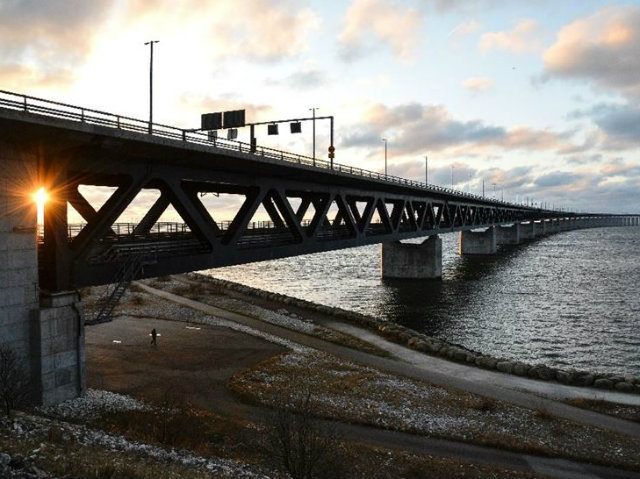All train, bus and ferry passengers travelling from Denmark to Sweden will from Monday be required to show photo identification before being allowed across the border in a drastic move by the Swedish government to stem an unprecedented migrant influx.
Travellers have been warned to expect long queues and delays once the checks go into effect from midnight (2300 GMT) on the Danish side of the Oresund bridge-and-tunnel link, which has been a major entry point for migrants and refugees hoping to start a new life in Sweden.
The measures are aimed at keeping out undocumented migrants and come after Sweden — which has taken in more asylum seekers per capita than any other European nation — said it could no longer cope with the unregulated flow of new arrivals.
A temporary fence has already been erected at Copenhagen airport’s Kastrup station, where trains will be stopped for the mandatory controls, to prevent people from trying to slip across the tracks.
“It’s as if we are building a Berlin Wall here. We are going several steps back in time,” said Michael Randropp, a spokesman for the local Kystbanen commuters’ association.
The re-introduction of border controls means that travellers between the two Nordic countries will have to show their passports for the first time in over half a century, and deals yet another blow to Europe’s cherished passport-free Schengen system.
Several other European Union countries, including Germany, Austria and France, also re-imposed border checks last year as the continent grappled with its biggest refugee crisis since World War II.
More than one million migrants reached Europe in 2015, most of whom were refugees fleeing war and violence in Syria, Afghanistan and Iraq, according to the United Nations refugee agency.
Sweden, a country of 9.8 million people known for its generous asylum policies, took in an estimated 160,000 asylum seekers last year alone.
– Delays, fines –
But the inflow has strained the country’s capacity to take care of the newcomers and authorities recently warned they would no longer be able to provide housing for everyone.
As the public mood shifted, the government began reversing its open-door policy.
Some temporary border controls were already re-introduced on November 12, after which the number of weekly arrivals dropped from a peak of 10,500 to some 3,500 by mid-December, according to Sweden’s Migration Agency.
In a further attempt to regain control over the flood of people arriving via Denmark, the Swedish parliament last month passed a temporary law making transport companies responsible for ensuring that those arriving via the 8-kilometre (5-mile) Oresund crossing carry valid photo ID.
Anyone who fails to provide the necessary documents will be turned back, and travel operators who fail to comply risk a fine.
“I believe that these ID checks will be effective. More will have to seek asylum in other countries,” Migration Minister Morgan Johansson recently told the Swedish daily Dagens Nyheter.
Aside from the inconvenience the checks are expected to cause — especially for the roughly 8,600 daily commuters between Copenhagen and the southern Swedish city of Malmo — the new measures have annoyed Danish travel operators for financial reasons.
Danish train company DSB has already threatened to levy a supplementary charge on passengers crossing the strait to cover the costs of the checks.
And the Danish HH Ferries Group said it had reported Sweden to the EU for unfair competition after being required to pay for identity checks.
The company argues that the consortium operating the Oresund Bridge, and which is partly owned by the Swedish government, was given special treatment because it was not required to help fund the measures.
The border controls have also irked the Danish authorities, who are waiting to see if they will end up with a buildup of migrants stuck at their border.
The migration crisis has been a major point of contention between the two neighbours, with Denmark’s right-wing government actively discouraging migrants and refugees from settling in the country.
It took in only about 18,000 asylum seekers last year.

COMMENTS
Please let us know if you're having issues with commenting.